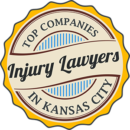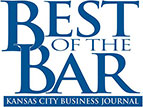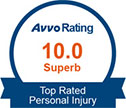This question is an important one. In a serious injury crash, the medical bills could exceed $100,000. Frequently, health insurance companies may try to refuse to pay these expenses because they were caused by another person’s fault (although often there is no legal basis for the refusal by a health insurance company to pay). As a result, truck crash victims might need to use their own money to put their lives back together.
Accident victims should never bear this burden alone. These bills can be especially concerning for those who do not have health insurance. And fortunately, an experienced Kansas City personal injury attorney may be able to find medical providers to provide reasonable and necessary medical care who will wait to receive payment until a case has settled. But because these bills must be paid eventually, assertive legal representation is just vital.
Building a Case
Victim/plaintiffs have the burden of proof. This is why attorneys often hire private investigators, accident reconstructionists, and other expert professionals who will collect compelling evidence and who will ultimately explain the evidence to the jury.
The police accident report is one of the earliest pieces of evidence that may be collected. In many cases, the report and medical bills might be the only things necessary. The police accident report usually contains witness contact information, a summary of the physical evidence, and an accident narrative.
In other cases, however, the police report is insufficient, at least by itself, and many portions of a police report may not be inadmissible in court based on the hearsay doctrine. When first responders arrive at accident scenes, emergency responders secure the area and tend to injured victims. Writing a report may not be the first priority, and often times the reports are simply wrong or incomplete. Sadly, this even occurs when a victim has been killed or seriously injured, which happens all too often in trucking crashes.
So, attorneys often must obtain evidence from other sources. The truck’s Event Data Recorder is a good example. Capacity varies by make and model, but generally, these gadgets measure and record facts like:
- Vehicle speed,
- Steering angle,
- Engine RPM, and
- Brake application.
Attorneys need the right tools and know-how to access and download EDR information. Large truck EDRs are quite sophisticated.
There are legal issues, as well. Missouri and Kansas both have very strict vehicle information privacy laws. So, attorneys usually need court orders before they can tinker with EDRs.
Liability Issues
Evidence helps attorneys establish negligence, or a lack of ordinary care. If the driver was negligent, the driver could be liable for damages. Multiple theories are available, depending on the facts in a given case, and drowsy driving is a good example of how they work.
Fatigue and alcohol affect the brain in the same way. Driving after 18 consecutive awake hours, which is like a long day behind the wheel, is like driving with a .05 BAC level. That is above the legal limit for commercial drivers in Missouri. So, fatigued drivers are negligent.
Drowsiness might also involve the negligence per se rule. Missouri also has strict HOS (hours of service) laws. Drivers who violate these laws, either by driving too much or not resting enough, might be responsible for damages as a matter of law.
Most truck crashes involve third party liability. Shipping companies and other large truck owners are vicariously liable for the negligent acts of their drivers. That is assuming the wreck occurred during the course and scope of employment. Generally, any activity that benefits the employer in any way satisfies this requirement.
Contact an Experienced Attorney
If you have been injured due to another person’s negligence, call Aaron M. House at 816-875-4260 today for a free consultation.
Tags: auto accident, medical bills, truck crash claims
Related Posts: Missouri & Kansas Weather-Related Car Crashes Understanding Liability After Vehicular Crashes Caused by the Rain Driving Safely in Construction Zones




